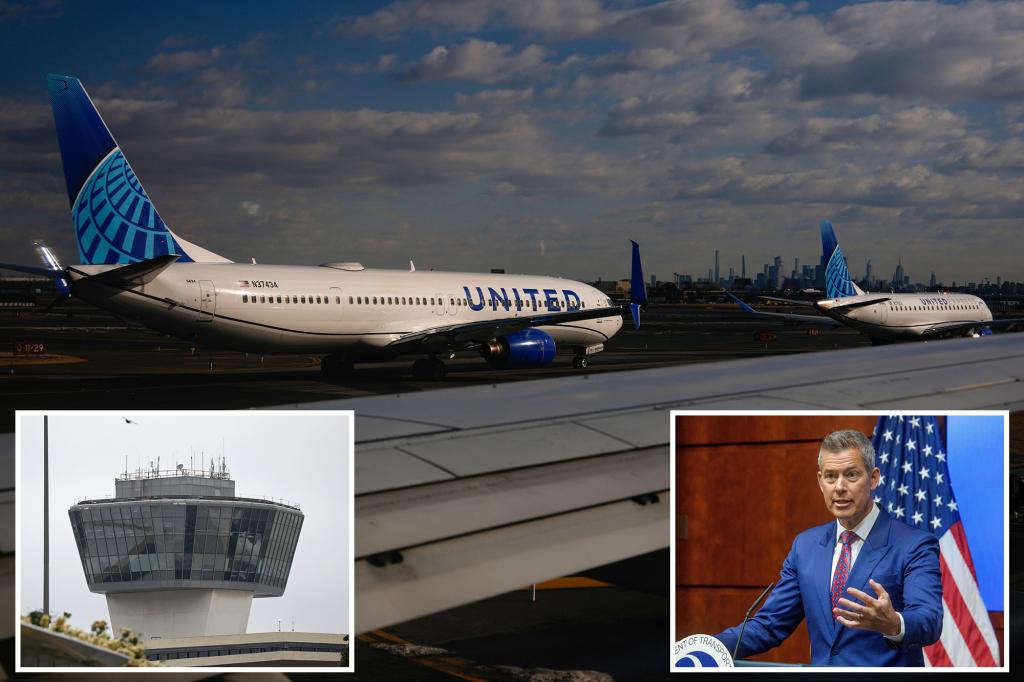Solving Newark Airport's Air Traffic Problems: A New Approach

Welcome to your ultimate source for breaking news, trending updates, and in-depth stories from around the world. Whether it's politics, technology, entertainment, sports, or lifestyle, we bring you real-time updates that keep you informed and ahead of the curve.
Our team works tirelessly to ensure you never miss a moment. From the latest developments in global events to the most talked-about topics on social media, our news platform is designed to deliver accurate and timely information, all in one place.
Stay in the know and join thousands of readers who trust us for reliable, up-to-date content. Explore our expertly curated articles and dive deeper into the stories that matter to you. Visit Best Website now and be part of the conversation. Don't miss out on the headlines that shape our world!
Table of Contents
Solving Newark Airport's Air Traffic Problems: A New Approach
Newark Liberty International Airport (EWR), a major gateway to the Northeast, has long battled notorious air traffic congestion. Frustration for travelers is palpable, with delays and cancellations a common occurrence. But a new wave of innovative solutions is emerging, promising a smoother experience for passengers and a more efficient operation for the airport. This article delves into the challenges and explores the promising new approaches being implemented to tackle Newark's air traffic woes.
The Root of the Problem: A Perfect Storm of Factors
EWR's congestion isn't a single issue, but a confluence of factors:
- High Traffic Volume: Newark serves as a major hub for United Airlines and a significant gateway for international flights, leading to consistently high traffic volumes, especially during peak hours.
- Limited Airspace: The airspace surrounding Newark is relatively constrained, limiting the number of aircraft that can operate simultaneously. This is compounded by nearby airports like LaGuardia and JFK, creating a complex and often congested airspace environment.
- Weather Sensitivity: Poor weather conditions, particularly low visibility and strong winds, can significantly impact flight operations, leading to cascading delays.
- Infrastructure Limitations: While ongoing improvements are being made, runway and taxiway capacity remains a limiting factor, contributing to delays on the ground.
Innovative Solutions on the Horizon
Addressing these multifaceted challenges requires a multi-pronged approach. Here are some of the key strategies currently being employed or explored:
1. Next Generation Air Transportation System (NextGen): The FAA's NextGen program is crucial. It leverages satellite-based navigation (GPS) to enable more precise and efficient flight paths, reducing delays caused by outdated radar-based systems. This allows for more aircraft to safely operate within the constrained airspace. [Link to FAA NextGen website]
2. Data-Driven Optimization: Advanced data analytics are being used to predict and mitigate congestion. By analyzing real-time flight data, weather patterns, and other relevant factors, air traffic controllers can proactively adjust schedules and routes to optimize flow. This predictive approach minimizes disruptions before they escalate.
3. Improved Airport Infrastructure: Ongoing investments in upgrading EWR's infrastructure are vital. This includes runway improvements, taxiway expansions, and enhancements to ground handling operations. These physical improvements directly address bottlenecks and increase capacity.
4. Collaboration and Coordination: Improved communication and collaboration between the FAA, airlines, and airport management are essential. This includes sharing real-time data and coordinating strategies to alleviate congestion. A unified approach is critical for success.
5. Exploring Technological Advancements: The future may hold further technological solutions, such as the integration of drone technology for inspections and potentially even autonomous air traffic management systems. These are still in the early stages of development but hold significant potential for long-term improvement.
The Path Forward: A Collaborative Effort
Solving Newark's air traffic challenges isn't a quick fix. It demands sustained effort, collaboration, and a commitment to leveraging cutting-edge technology. The combination of NextGen, data-driven optimization, infrastructure improvements, and enhanced communication provides a strong foundation for a more efficient and reliable air travel experience at EWR. While challenges remain, the innovative approaches underway offer hope for a smoother journey for millions of travelers in the years to come. Stay tuned for further updates as these initiatives continue to develop.
Call to Action: Have you experienced significant delays at Newark Airport? Share your experiences in the comments below!

Thank you for visiting our website, your trusted source for the latest updates and in-depth coverage on Solving Newark Airport's Air Traffic Problems: A New Approach. We're committed to keeping you informed with timely and accurate information to meet your curiosity and needs.
If you have any questions, suggestions, or feedback, we'd love to hear from you. Your insights are valuable to us and help us improve to serve you better. Feel free to reach out through our contact page.
Don't forget to bookmark our website and check back regularly for the latest headlines and trending topics. See you next time, and thank you for being part of our growing community!
Featured Posts
-
 Saharan Dust Storm Florida Air Quality Alert And Health Impacts
May 30, 2025
Saharan Dust Storm Florida Air Quality Alert And Health Impacts
May 30, 2025 -
 Analyzing The Nascar Power Rankings After Chastains Dominant Charlotte Performance
May 30, 2025
Analyzing The Nascar Power Rankings After Chastains Dominant Charlotte Performance
May 30, 2025 -
 Western Conference Finals Oilers Up 3 1 After Dominant Game 4 Performance Against Stars
May 30, 2025
Western Conference Finals Oilers Up 3 1 After Dominant Game 4 Performance Against Stars
May 30, 2025 -
 Jaheim Arrested R And B Star Charged With Cruelty To 6 Dogs
May 30, 2025
Jaheim Arrested R And B Star Charged With Cruelty To 6 Dogs
May 30, 2025 -
 Ross Chastain Returns To Nascar Power Rankings After Dominant Charlotte Win
May 30, 2025
Ross Chastain Returns To Nascar Power Rankings After Dominant Charlotte Win
May 30, 2025
